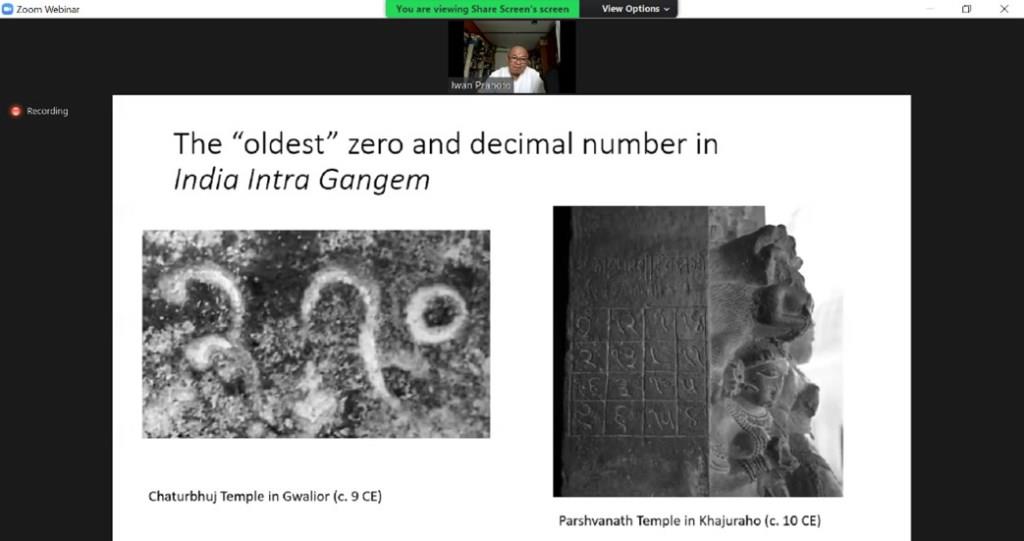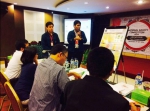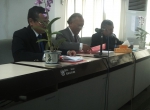ITB FMNS Lecturer Reveals the Origin of Zero Number and Decimal System Through Inscription of the Archipelago
By Adi Permana
Editor Adi Permana

BANDUNG, itb.ac.id— Many people do not know that science is closely related to culture. ITB FMNS (Faculty of Mathematics and Natural Sciences) Professor Prof. Iwan Pranoto, M.Sc., Ph.D. delivered the topic as it became one of the interesting discussions in the Borobudur Writers and Cultural Festival (BWCF) 2021 on Sumatra Archaeology Series session (21/11/2021).
The Chairman of Jambi Archaeological Hall, Dr. Agus Widiatmoko, was present as the event host. According to Agus, the topic raised is quite interesting because the number 0 turns out contributes to the inscriptions of the archipelago and can reveal the civilization of ancestors in the archipelago.
Get to Know Asian Monsoon
Asia Monsoon was the most crucial area in classical times because monsoon wind could transfer/disseminate knowledge. Or it can be interpreted as a large area and experienced extraordinary cultural exchanges in the past. The existence of monsoon winds at that time was very reliable because the time and direction were particular, so sailors from the Indian sub-mainland widely used it.
The Origin of Zero Number
According to Iwan, there are two opinions of the origin of the number 0 and the decimal system. First, before 1930, people believed the number zero and the decimal system came from Arabic. Second, after 1930, the zero and decimal systems originated in India (India Intra Gangem). But these two opinions are not accurate with the evidence of the existing relics.
The number 0 and the oldest decimal system in Indian Intra Gangem were discovered in the 9th century. This fact alone can refute the second statement because the Arabian merchants have entered India in this century and must be sought in India Extra Gangem.

Finally, researchers traced back the history and discovered that the number 0 and the oldest decimal system in Indian Extra Gangem found in the Aryabhata Patna inscription in Nalanda found in the 5th century. After that, in the 6th century, another clue unveils in the founding of the Kedukan Bukit inscription (Sumatra) and Sambor inscription (Cambodia). This argument is quite strong because it sees the close relationship between the kingdom of Nalanda and Sriwijaya at that time. But that does not mean it is definite proof and still needs to be reviewed. Then, in the 9th-century, mathematician Al-Khwarizmi began writing a book entitled "Indian Computation" and in the 13th century, Fibonacci mathematicians began to globalize the number 0 and the decimal system.
Indonesia has consciously embraced the terminology of Indianization for a long time ranging from culture to food. However, the terminology is not entirely appropriate if associated with the existing evidence. So it is vital to process the raw information for the truth and related to the past.
"The past is glorious, but the function of the past is to be cherished, not to abandoned," said Iwan as the closing sentence of his presentation.
Reporter: Pravito Septadenova Dwi Ananta (Teknik Geologi, 2019)
Translator: Aghisna Syifa R (Biologi, 2020)

.jpg)
.jpg)
.png)
.jpg)
.jpg)



.jpg)